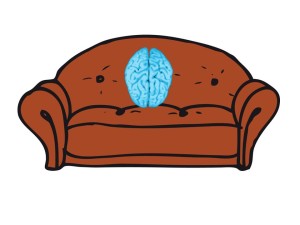 Changing behavior is hard. So is getting people’s attention.
Changing behavior is hard. So is getting people’s attention.
It’s also hard to make sure individuals care enough to pay attention and consider taking action when you ask them to change.
The road between your “ask” and their “act” is long, winding and hilly.
For those of us who want or need to influence ourselves or others to change—which is about everybody—we’ve got to realize that this is the environment in which we’re working.
In other words, accept it, rather than fight it, because this terrain reflects human nature.
We humans are “mental couch potatoes,” according to UCLA psychology professor Dr. Matthew Lieberman. As he explains in this 2013 book, Social: Why Our Brains Are Wired to Connect, “If there’s a way to avoid exerting effort, we almost always do.”
This means we change agents need to go about the change process in a very methodical, disciplined and persistent way. There’s no magic pill or silver bullet.
There are checklists and tools though. They put “hard edges” on soft, fluid challenges, such as change initiatives in our VUCA (volatile, uncertain, complex and ambiguous) world.
When you use checklists and tools you’re able to take advantage of several benefits of “standard work” as encouraged by the Lean community.
- You reduce waste by using already-designed tools to help you with your tasks.
- You reduce re-work because everyone using the tools should understand the work processes you’re following, which improves hand-offs.
- You reduce stress—at least in this area of your change initiative—because your work is well organized.
And you can enjoy even more advantages when you use checklists and tools that have been field-tested over the years and come with case studies, descriptions of pitfalls to avoid, and other tips.
If you’re looking this type of help, check out the new book, The Changemaking Checklists: A Toolkit for Planning, Leading, and Sustaining Change by Richard Bevan. It’s a treasure trove of proven checklists, guidelines, templates, and talking points.
You either can use the tools as is or as a starting point to modify and adapt to your situation.
The author has extensive experience with change, from his initial days in manufacturing management with Lever Brothers to consulting for Towers Perrin (now Towers Watson) in Europe, Australia and the United States, consulting on his own, and to teaching at the University of Washington Executive MBA program.
(In the interest of full disclosure, Richard was my boss at Towers Perrin. Also, I contributed content for the peer-by-peer change practices in Section 9 of the book. This section addresses the importance of engaging more individuals using social media and other technologies to support each other in making change. And last but not least I reviewed a draft of the book and gave feedback to Richard.)
As do others, I agree that this new book is a great companion to Richard’s 2011 book, Changemaking: Tactics and Resources for Managing Organizational Change.
One caveat. The books focus primarily on the “will” (motivation) and “skill” (ability) of change—including getting people’s attention. The latest book also has tools for helping people get off the couch and over the “hill” to take action.
However, neither book is steeped in behavior design. (For more about behavior design and its distinctive contributions to changing behavior, see my recent article for PR News, Inserting Behavior Design Into Your PR Effort.)
How about taking an important step and supporting your own mental couch potato tendencies and using The Changemaking Checklists rather than inventing your own tools?
Taking the easy, simple path increases your chances for success when it comes to changing behavior.

0 Comments